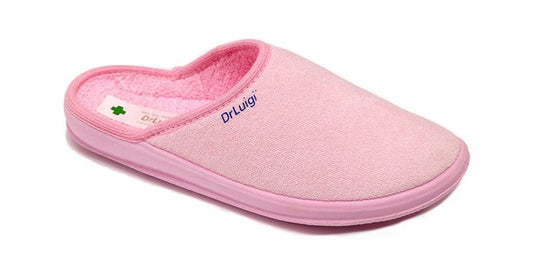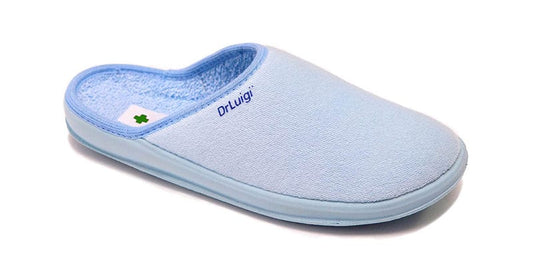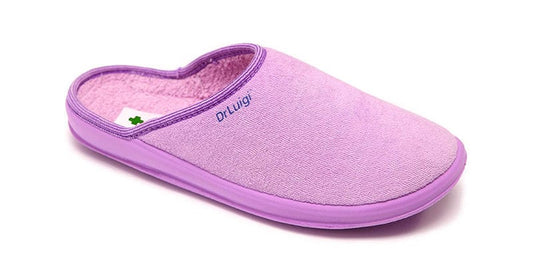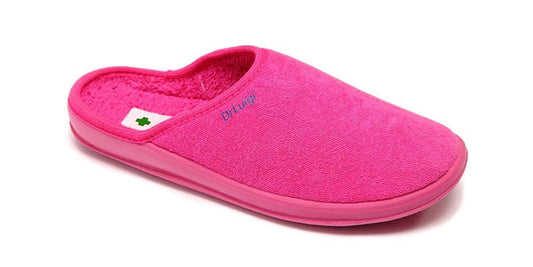There are several reasons why you should strengthen your feet on a daily basis. The tiny muscles of the foot are crucial, yet they are sometimes disregarded as a source of support for a healthy foot. It is critical to keep your feet in good condition. Basic foot care is insufficient, and regular foot massage is an excellent complement to exercise for improving circulation. However, exercise should not be overlooked.
Regular exercise will enhance general balance and stability, which will effect your posture and gait, as well as make and keep your feet more supple and toned. Walking and running do not sufficiently stimulate these little muscles, and strengthening them will ease foot pain, prevent deformations, and lower the arches of the feet. Begin by incorporating easy exercises into your everyday routine.
MATERIAL FOR FEET
The foot is made up of 26 tiny bones that are joined by ligaments, muscles, fascia (thin sheaths), and joints that are arranged in a system of arches. With such a huge number of "parts" for movement, it's no surprise that he can suffer from a variety of issues.
The blood vessels and tendons of the extensor muscles of the foot and toes are hidden beneath a thin layer of skin on the back of the foot (dorsum pedis). Two longitudinal and one transverse arches function dynamically to accept and absorb shock (contact) from the substrate. They play a critical role in optimal foot function.
The anatomy of the foot makes it incapable of carrying huge static stresses. As a result, load causes the arches and arches of the feet to fall, resulting in statically induced malformations such as a lowered or flat foot (pes planus) or a lowered and extended front of the foot with a malformed big toe (hallux valgus).
FUNCTION OF THE FEET
We don't even realize how important it is to form our feet. The feet are responsible for carrying the weight of the entire body as well as allowing mobility, such as standing and walking. We simply cease thinking about our own body statics and mobility as soon as we start walking, even as children, and accept what we've learnt up to that point as a constant that will accompany us throughout our lives. At the age of 11 months, the average kid masters walking, a dynamic activity that necessitates the coordinated action of hundreds of bones and muscles in the locomotor system.
The foot is a strong foundation for a man's standing position, but it is also designed for movement and the best possible adaptation to diverse terrain types. It's the only bodily part that's always in contact with the earth (when standing, sitting, lying down).
What are the key points of contact between the feet and the ground?
These are the fifth, first, and fifth metatarsal bones, to put it simply (places where the thumb and little finger "start"). Of course, other portions of the body, such as the fingers, come into contact with the ground. Given that the body's full weight is supported by only three fulcrums of the foot, and sometimes only one leg, it's regrettable that the feet, as such a vital organ for movement, are frequently overlooked in training.
The potential of incorrect foot placements, as well as the possibility of spasms, is decreased by establishing the exact position of the feet in each exercise. Simultaneously, when conducting exercises, a perfectly defined position of the foot, such as a tight heel or outstretched toes, will provide the greatest possible results in shaping or stretching individual leg muscles.
EXERCISE IS VERY IMPORTANT
If you are in good health and have no health problems, there is no need to avoid training any muscle group, particularly your feet and lower extremities. In fact, it is recommended that these muscles be activated on a daily basis. The foot muscles are sometimes overlooked in training, despite their importance: the foot is the foundation of our standing, walking, and moving, as well as the carrier of our overall weight and a significant component of many workouts.
Exercise, not just in the feet, but in all muscles and joints of the body, has the biggest impact on reducing pain and cramping. Firm and flexible feet will help you stay active while reducing foot and ankle discomfort, muscle soreness, and improving your overall foot health. Exercises that increase your range of motion and help you lift your legs can help you avoid injury. Stretching slowly and lightly will help you become more flexible. Your muscles will be able to provide superior support and protection to your feet as a whole if you do strength workouts.
There are a few basic workouts that you can do every day. You can do these standing or sitting, according on your skills. Standing puts a stronger load on the feet, while sitting puts a less load on the feet. We'll also go over a set of workouts that need very little footwork.
Stretching and strengthening exercises can be done three times a week or even every day to improve range of motion and strength in the feet for a lifetime of health and vitality. Exercises for foot health should always be done barefoot. As a result, the foot is the most agile, and you can detect if you're doing the exercises correctly by looking at it.
Before doing any of these exercises, visit a doctor or physical therapist if you have sore feet and ankles, if you have any injuries, or if you have arthritis or diabetes. Your doctor may add more workouts or remove some of the ones given here, depending on your needs.
EXERCISES
Leaning on your toes is the first and most basic exercise that you should do. Lean on one leg while standing up straight. Place the free (other) leg in a ballerina position (toes towards the floor), bend the toes as much as possible inwards, and lean softly on that leg for at least 15 seconds. Check to see whether your stability on the other leg hasn't deteriorated. Then, gently open your toes and lean back on the same foot. Open and close your toes at least 5 times before switching to the other foot.
Lift your toes in the air while maintaining the rest of your feet firmly on the ground as you stand entirely leaning on your feet. Simply lower your thumbs, then lift them to connect with the rest of your fingers before lowering all of your fingers to the ground. Rep the exercise five times more.
Roll the ball, bottle, or pickle along the entire foot with the foot of the other foot while standing on one leg, not only massaging the entire foot but also engaging all the muscles. This activity can be both joyful and entertaining. Prickly balls of varying intensities are also beneficial for this exercise and sensory stimulation.
Place a sock or towel on the floor and try to grab and raise the object from the floor and shift it from one location to another while standing on the toes of one foot. The crease between your toes and feet, not just your toes, is where you look for the sock. You can also do the workout while sitting, which eliminates the aggravating aspect of maintaining balance that we face when standing. If you are unable to rely on your feet and find this exercise difficult to do, we recommend moving on to the next one. Other items can be used to recover, especially later when you can add some spongy and even plastic (smaller) items that are more difficult to pick up with your foot off the floor (eg pencil). Hold the lifted sock (or other object) in the air for 10 seconds before lowering it and repeating the process five times more. Then do the same thing with your other foot.
You may also use a massage roller to massage your feet and raise your arch, which is quite useful for massaging and using your feet. There are also thorny protrusions on it. This massages and activates the foot muscles at the same time. You can perform the same exercise while sitting, which will lessen the amount of pressure your feet exert on the ball. If you can't trust your foot but still want to try the exercise, have a family member lightly massage your feet. Simply massaging each foot for a few minutes would suffice.
Lie down flat on your back. Pull your feet in close to your face and stretch them out to the side (down). Stretch your feet by pointing your toes away from you, then make a movement in the opposite direction by pointing your toes at you, making sure your legs are outstretched and taut. Those who are able to put additional strain on their feet can perform this exercise standing up to stimulate the muscles in the rear of the lower leg even more. Rep the movement for a total of 20 times. This exercise can also be done while sitting, and depending on the intensity and length, it not only strengthens leg muscles but also acts as a stretching exercise.
Twist your feet inwards and outwards while remaining in the same position. Circling the feet, first to one side and then to the other, is a comparable exercise. Each position should be kept for a couple of seconds before resting. Repeat the exercises numerous times, gradually increasing the number of repetitions until you reach a maximum of ten (or as many as you can).
You may also do the exercises while standing - walk on your toes for a few seconds, then walk on your heels and back to your toes while standing on an elevated surface or on its edge. Get up on one foot's toes first, then the other.
Cross your legs and grip one foot with the opposing hand while sitting on a chair. Spread your toes apart by sliding your fingers between them. Rep with the opposite leg. This is how the muscles in your toes are stretched. It could be challenging at first because our fingers aren't used to such movements, but don't give up.
Place your right foot behind you while standing erect, resting it on your toes and pressing them to the floor with your heel facing up. The arch of the foot will be twisted into a crescent shape. Make a complete circle with your foot while keeping your toes on the ground. The exercise can be done in either direction. Then switch legs and do it all over again. This exercise increases blood flow and energy to the feet, which improves flexibility and general balance.
Squat with your arms under your shoulders and your weight on your heels. Repeat around ten times, rising to your toes and then lowering yourself to your heels. This will stretch and strengthen the muscles and joints of the feet, as well as stabilize the leg and keep the ankles and ankles mobile.
Stretching the lower leg (leaf) can help because the tendons and muscles of the foot are related to the muscles of the lower leg. To make it easier, stand in front of the wall with your feet a few inches apart and your hands resting on the wall. Raise your heels to their highest point and hold for a few seconds. Lower your heel to the ground slowly. Repeat this exercise numerous times throughout the day.
The most common errors and how to avoid them are as follows:
Support for the foot's outer edge
Correct: concentrate on the big toe's support or the area of the foot where the big toe begins (the point of contact between the big toe and the base of the foot).
Instead of supporting the thumb at the base, support it at the top.
People frequently curl their thumb and press the tip of their thumb into the ground in order to make good touch with that part of the foot. The issue is that by lowering the potential force, we also lower the support surface and appear to shorten the foot.
Correct: concentrate on gripping the floor with the base or middle of the thumb, which is the "thinnest" part of the thumb.
Feet that have been lowered
We lose contact with the outside of the foot's base (that of the little toe). Also, we don't have active arches in our feet. Reduced dorsiflexion (how far the knee can move forward without lifting the heel) or hips pushed in front of the body are common causes of lowered feet, but there are a variety of other causes.
Correction: elevating the heel to the elevation is the quickest and most effective correction, but we must also focus on dorsal flexion in the long run. Strengthen the arches of the feet and do the action without light measures on occasion.
The inner vault is far too large.
When the tip of the thumb is pressed so deeply into the base that the inner section of the contact points, particularly at the base of the thumb, rises from the base, this is known as a thumb lift. The potential stresses on the ground are reduced, as is the tripod's stability.
Correction: 1st and 2nd are the same.
CONCLUSION
Whether we're standing, sitting, or lying down, one portion of our foot is always loaded, and it can become uncomfortable if we wear improper shoes or have small injuries. You can keep your feet healthy by wearing good shoes in addition to doing regular exercises at home. Luigi helps alleviate leg and foot pain by allowing individuals to wear their shoes for longer periods of time, which is especially beneficial for people whose jobs need them to stand or walk for lengthy periods of time. These shoes are especially ideal for patients with limited mobility and injuries of the neurological and locomotor systems, and can thus be prescribed as a medical aid, due to their anatomical design, flexibility, softness, comfort, and light weight.
When it comes to health issues, it's critical to seek professional advice, and even more so if necessary, rather than drawing conclusions on your own, no matter how confident you are that you know your body best. All muscle groups must be exercised, a healthy and diverse food must be consumed, and adequate sleep must be obtained for a healthy, powerful body. The benefits will come naturally if you live this way of life; you will feel terrific and energetic, and you will inspire others to join you in improving the quality of life.





